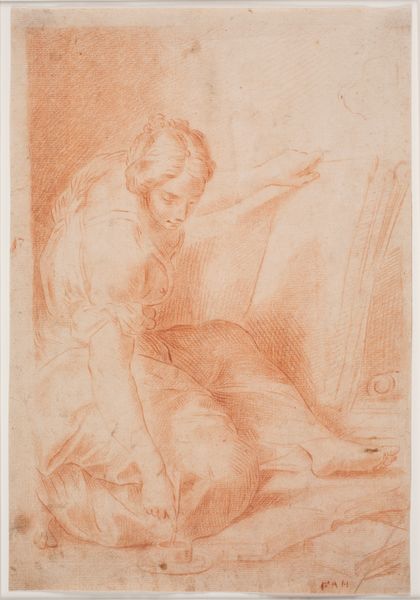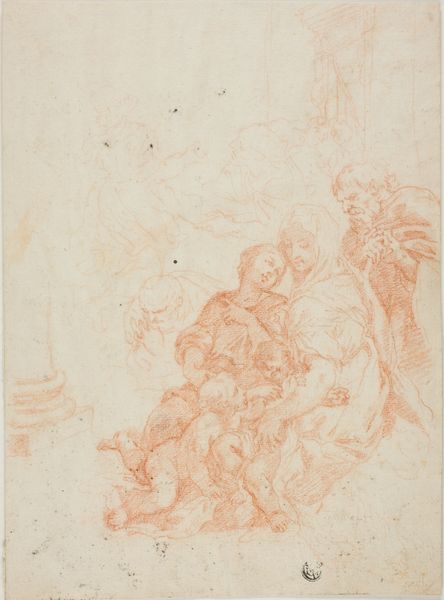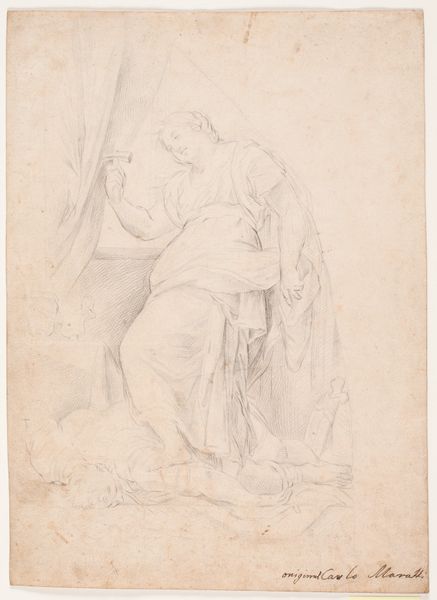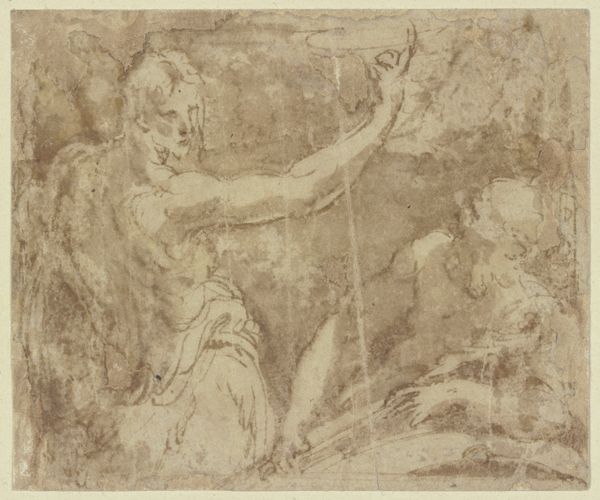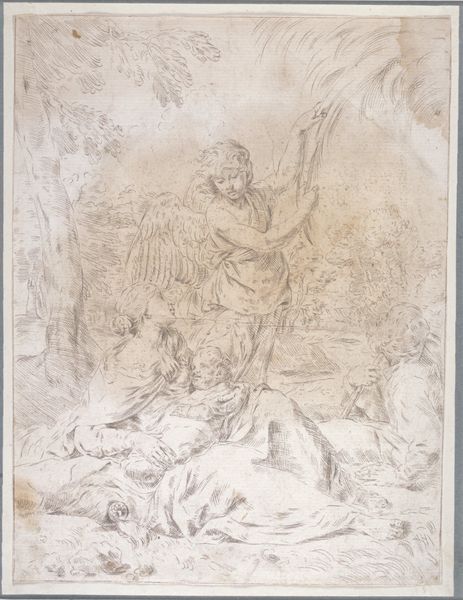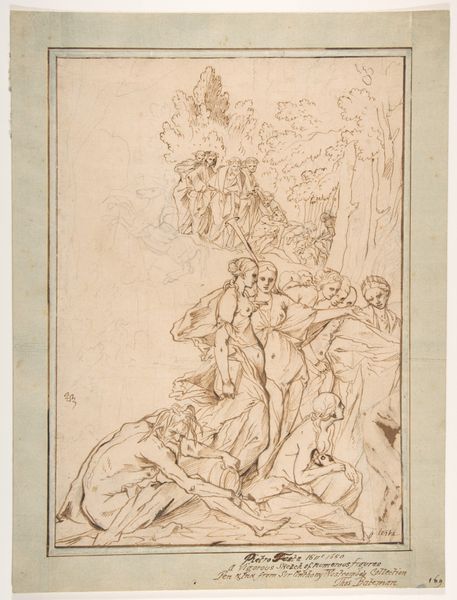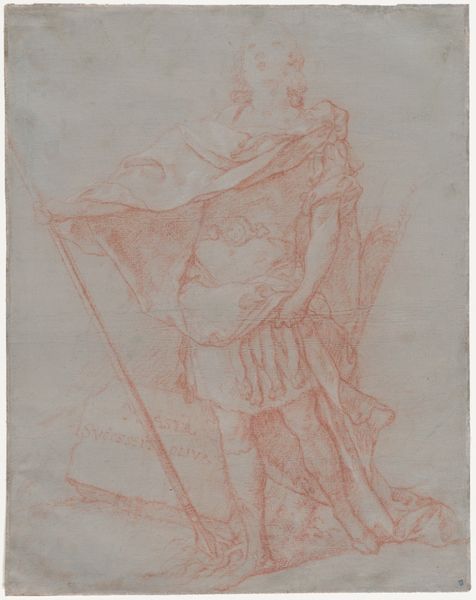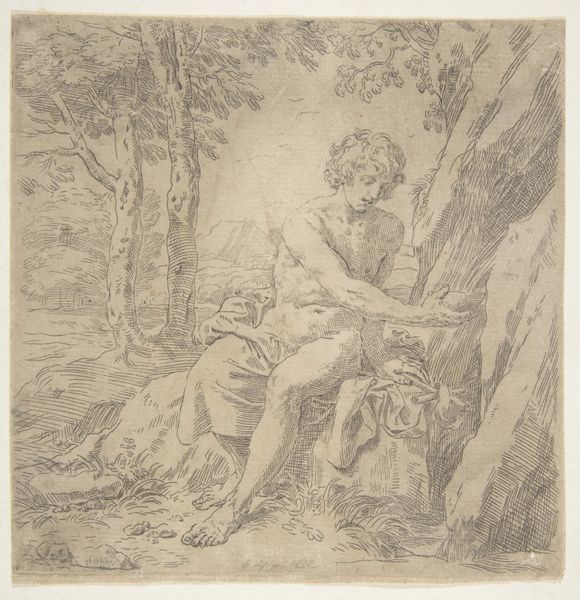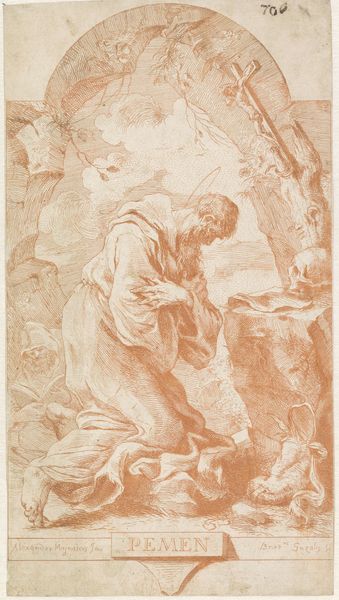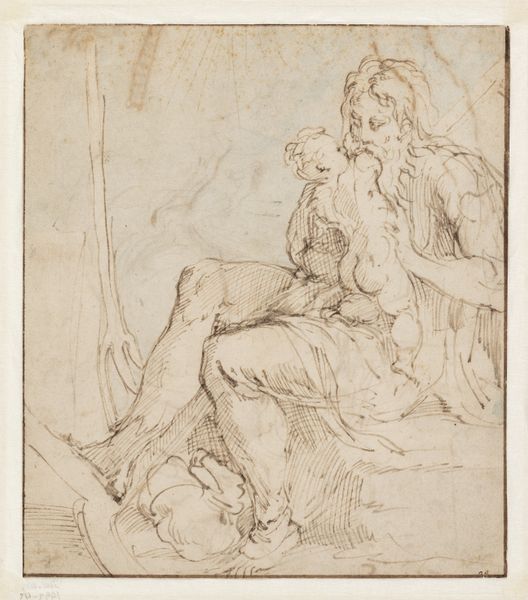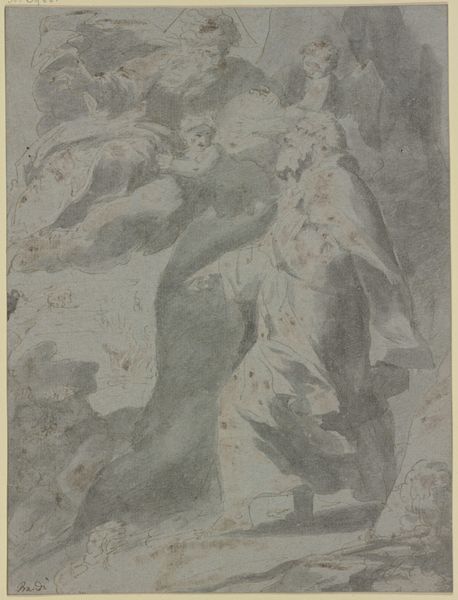
drawing, charcoal
#
drawing
#
allegory
#
baroque
#
charcoal drawing
#
figuration
#
charcoal
#
history-painting
Dimensions: 464 mm (height) x 366 mm (width) (bladmaal)
Curator: What a striking piece. There's something incredibly vulnerable about Narcissus here, wouldn’t you say? Editor: Absolutely. I'm immediately drawn to the melancholic atmosphere of Hendrik Krock’s "Narcissus at the Fountain," conceived between 1671 and 1738. It’s rendered in charcoal, giving it a softness that somehow intensifies the tragedy. The flushed charcoal medium mirrors Narcissus' flushed skin as he fixates upon his reflection, and a cherubic figure lurks at the upper portion of the frame, reminiscent of Cupid. But let's dig deeper. How does this capture the moment of self-discovery…or, perhaps, self-destruction? Curator: Ah, self-destruction, that's where the juicy bits lie, isn't it? He's completely enraptured, utterly lost in that watery gaze. But the interesting thing is the quietness of the scene. The trees seem to hold their breath. What's your take on that quietude? Editor: It's the silence before the fall, perhaps. This depiction invites critical reflection on how beauty standards are upheld through image and representation. Narcissus is trapped in an endless cycle of needing to meet an image projected back at him, and, ultimately, with dire consequences. Krock highlights not only the tragedy of obsession, but the politics of beauty. Curator: Politics, always lurking, even in the most idyllic landscapes. But looking closer, isn't there also a commentary on the dangers of artistic pursuit itself? As artists, we also stare into our reflections, creating and recreating ourselves in the image of our desires, chasing an impossible perfection. Editor: That’s a powerful point! It also resonates with contemporary questions around visibility, representation, and the power of seeing and being seen. We now live in a time where the possibility for recognition and valorization feels both expansive and fraught. There are other things that intrigue me here too, for example the Cupid looks away, either foreknowing the imminent doom, or bored because he witnesses the cyclical pattern. But also, perhaps it is because the love from another person cannot equate love of oneself? The work speaks to timeless questions, if nothing else. Curator: So true. It's both timeless and profoundly resonant with today's obsession with self-image. Funny how a 17th-century drawing can still hold up a mirror to our modern souls, eh? Editor: Indeed. It reminds us that even as image-makers and admirers of art, we too are vulnerable to the illusions we create and consume. Thanks for your insights on this beautiful charcoal, this helps bring life to what may look like a morbid image on first glance!
Comments
No comments
Be the first to comment and join the conversation on the ultimate creative platform.
